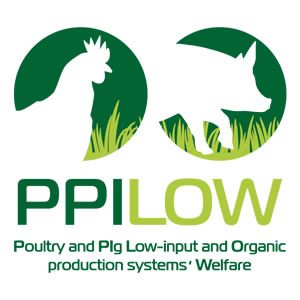6.1.4 – Early predictors of range use
Many species prefer to make efforts to acquire their food (or contra-freeload, in scientific language), even when they have readily available food sources, at no cost. Although chickens have all the necessary food in the barn, they spend some of their energy exploring and searching for food (i.e., foraging) in the range. In order to see whether individual differences in range use is linked to contra-freeload, chickens’ behavior was followed all over their productive cycle, from chicks, before they had access to the range, until some days before slaughter. It was also tested in a standardized testing situation: in a two-chambered apparatus, chickens were exposed to a chamber where the mealworms were readily available on the floor, while in the other chamber, mealworms were mixed with foraging substrates, therefore finding and eating them was more difficult. Hard-working chickens, those who spent more time foraging in their home environment (barn and range), but also those who preferred the chamber where mealworms were hardly accessible, are more prone to use the range. Interestingly, these differences can be seen in chicks before they accessed the range, which points to an early predictive behavior of range use. Independent of the season (spring or fall), foraging behavior also seems to be positively correlated with range use during chickens’ whole life.
Papers
- Working for food is related to range use in free-range broiler chickens; Ferreira V. H. B. et al. – Scientific Reports – 2021
- Foraging Behavior Shows Individual-Consistency Over Time, and Predicts Range Use in Slow-Growing Free-Range Male Broiler Chickens; Ferreira V. H. B. et al. – Frontiers in Veterinary Science 9 – 2022

